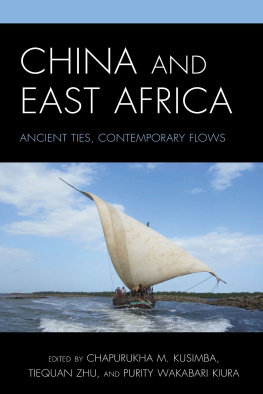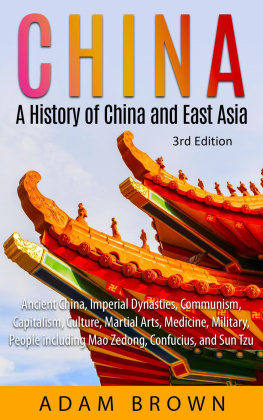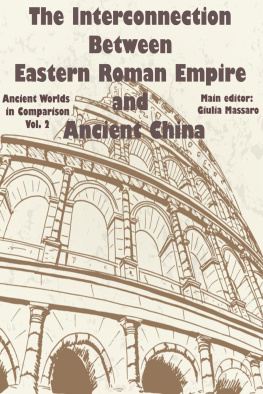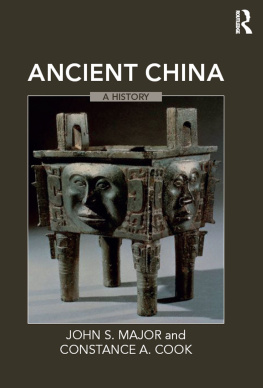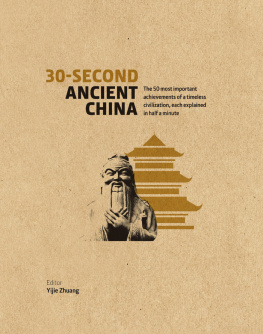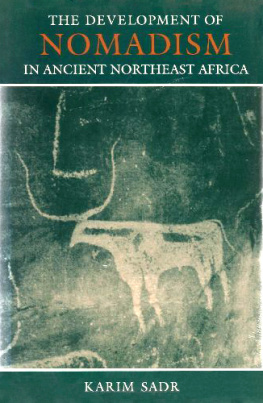Chapurukha M. Kusimba - China and East Africa : Ancient Ties, Contemporary Flows
Here you can read online Chapurukha M. Kusimba - China and East Africa : Ancient Ties, Contemporary Flows full text of the book (entire story) in english for free. Download pdf and epub, get meaning, cover and reviews about this ebook. year: 2020, publisher: Rowman & Littlefield Publishing, genre: Romance novel. Description of the work, (preface) as well as reviews are available. Best literature library LitArk.com created for fans of good reading and offers a wide selection of genres:
Romance novel
Science fiction
Adventure
Detective
Science
History
Home and family
Prose
Art
Politics
Computer
Non-fiction
Religion
Business
Children
Humor
Choose a favorite category and find really read worthwhile books. Enjoy immersion in the world of imagination, feel the emotions of the characters or learn something new for yourself, make an fascinating discovery.
- Book:China and East Africa : Ancient Ties, Contemporary Flows
- Author:
- Publisher:Rowman & Littlefield Publishing
- Genre:
- Year:2020
- Rating:4 / 5
- Favourites:Add to favourites
- Your mark:
- 80
- 1
- 2
- 3
- 4
- 5
China and East Africa : Ancient Ties, Contemporary Flows: summary, description and annotation
We offer to read an annotation, description, summary or preface (depends on what the author of the book "China and East Africa : Ancient Ties, Contemporary Flows" wrote himself). If you haven't found the necessary information about the book — write in the comments, we will try to find it.
China and East Africa : Ancient Ties, Contemporary Flows — read online for free the complete book (whole text) full work
Below is the text of the book, divided by pages. System saving the place of the last page read, allows you to conveniently read the book "China and East Africa : Ancient Ties, Contemporary Flows" online for free, without having to search again every time where you left off. Put a bookmark, and you can go to the page where you finished reading at any time.
Font size:
Interval:
Bookmark:

China and East Africa
China and East Africa
Ancient Ties, Contemporary Flows
Edited by
Chapurukha M. Kusimba, Tiequan Zhu,
and Purity Wakabari Kiura
LEXINGTON BOOKS
Lanham Boulder New York London
Published by Lexington Books
An imprint of The Rowman & Littlefield Publishing Group, Inc.
4501 Forbes Boulevard, Suite 200, Lanham, Maryland 20706
www.rowman.com
6 Tinworth Street, London SE11 5AL, United Kingdom
Copyright 2020 by The Rowman & Littlefield Publishing Group, Inc.
All rights reserved . No part of this book may be reproduced in any form or by any electronic or mechanical means, including information storage and retrieval systems, without written permission from the publisher, except by a reviewer who may quote passages in a review.
British Library Cataloguing in Publication Information Available
Library of Congress Cataloging-in-Publication Data Available
Library of Congress Control Number: 2019952979
ISBN 978-1-4985-7614-7 (cloth : alk. paper)
ISBN 978-1-4985-7615-4 (electronic)
 The paper used in this publication meets the minimum requirements of American National Standard for Information SciencesPermanence of Paper for Printed Library Materials, ANSI/NISO Z39.48-1992.
The paper used in this publication meets the minimum requirements of American National Standard for Information SciencesPermanence of Paper for Printed Library Materials, ANSI/NISO Z39.48-1992.
We dedicate this book to Ms. Wang Youlin and
Mr. Lu Chung Chun for their commitment to African civilizations
and promotion of the African Studies in East Asia.
Contents
Chapurukha M. Kusimba
Louis De Weyer
Emmanuel K. Ndiema
Chapurukha M. Kusimba
Janet Monge, Allan Morris, Sloan Williams, and Chapurukha M. Kusimba
Herman Kiriama
Ibrahim Busolo Namunaba
Elgidius Ichumbaki
Tiequan Zhu and Chapurukha M. Kusimba
Min Wang, Tiequan Zhu, Khalfan Bini Ahmed, and Chapurukha M. Kusimba
Laure Dussubieux, Gilbert Oteyo, and Chapurukha M. Kusimba
Xinfeng Li
Angela Kabiru
Boyang Ma
Caesar Bita
Zhan Changfa
Augustin F. C. Holl
Figures
Map of Eastern and Southern Africa Showing All the Sites Mentioned in the Book. |
Mrs. Baraka Badi Shee, Her Son Badi Sharif, and Her Grandson Saidi Are the Residents of Siyu Whose DNA Revealed Paternal Ties to East Africa. |
Chondrite-Normalized Rare Earth Elements Patterns Spider Diagram Showing Comparison of the African (a), Longquan (b) and Dapu (c) Samples and the LaNYbN Scatter-Plot (d) For Various Samples. Chondrite Elemental Values. |
How Did a $12 Million Chinese Built Bridge in Kenya Collapse Days after Been Officially Inaugurated? |
Tables
Renaissance in Asia and Africa during the Tang-Sung Dynasties 6181279 CE |
Chronological Context of Long-Distance Trade |
Commodities Exchanged Between China and East Africa |
Sex Distribution |
Distribution by Age. Skeletons Not Aged Were too Fragmentary and/or without Skeletal Elements for Aging |
Macro Description of Mtwapa Samples |
Analytic Results of Manda Samples by EDXRF (wt.%) |
Kenyan Sites with v-Na-Al Glass Beads |
Other Sites on the Eastern Coast of Africa and around with M-Na-Al 2 and M-Na-Al 6 Glass Beads |
The Number of Chinese Tourists Visiting Kenya Has Been Rising Steadily Since 2009 |
Investment in Antiquities and Monuments by Province in 2016/17 Final Year |
Chapurukha M. Kusimba
Ancient trade between East Africa and Asia was a complex affair that involved many communities and took several routes (Casson 1990; Mitchell 2005; Pearson 2003). For over two millennia, African commodities have been highly desirable in the world. During the same period, Africans have imported and consumed commodities from the rest of the world. Regular bidirectional consumption of African and Chinese products begun during the Tang period has continued to the contemporary times. From the Tang (616907) through the Yuan Dynasties (12711368), the volume of trade between East Africa and China was lower compared to that from Southwest Asia and South Asia largely due to distance factors. Initially, trade between the two regions was predominantly indirectly through the agency of Muslim and Hindu merchants from Southwest and South Asia. There were two principle routes of trade: first, the overland caravan through Central Asia and Southwest Asia via the Persian Gulf and India Ocean (Hansen 2012; Liu and Luo 2004), and second, a direct maritime route through the South China Sea and Indian Ocean via Sri Lanka along the West Indian Seaboard to East Africa via Aden (Jacq-Hergoualch 2002; Miksic 2013).
The destruction of Guangzhou in 878 CE provided an opportunity for expansion and extension of maritime trade (Cho 2009). The growth of settlements like Mantai and Galle in Sri Lanka and Chaul, Khambat, and Gujarat along the west coast of India into major ports of trade illustrates the expansion of maritime trade and the growing economic and political power of Chinese, Hindu, and Muslim merchants. Along with Chinese ceramics and silks reaching Africa were also Indo-Pacific beads, pottery, cloth, jewelry, and foodstuffs (Kusimba 2017, 2018a, 2018b). Chinese artifacts in Syria, India, and East Africa show the reach of these indirect trade routes. These artifacts include whitewares made in Fujian, mainly Ding, qingbai, and molded whitewares, the use of Chinese and Indian coins, and the close similarity of Chinese greenwares.
This book explores SinoAfrica connections in the contexts of globalism and globalization around the following key questions. What do we know about globalism and globalization based on material remains and historical records? How were local communities, such as inland huntergatherers, nomadic pastoralists, and swidden farmers, entangled with regional sociopolitical groups, and trading communities around the world? What power dynamics can be detected and how did these change over time? What were the costs and benefits of participating in globalized social, economic, and political networks? What was the role of ancient chiefly, state, and imperial governments in initiating interregional exchange, integration, and isolation? More broadly, what impacts, if any, did local rivalries and competition have on international trade in the region? Are these detectable and/or even testable in the archaeological record and how do they complement and/or contradict historical records?
Multiple authors in this volume address specific questions such as (a) how and in what ways did political tensions during the Ming Dynasty (13681644 CE) affect Chinas balance and trade with Africa? (b) To what extent did the imperial policy to abolish international engagement affect global trade? and (c) How do we explain the presence of Chinese exports including ceramics, jewelry, and cloth, especially silk, outside China despite the official imperial policy of disengagement with foreign lands?
Archaeologists have documented a sharp decline in the proportion of Chinese ceramics found in shipwrecks and terrestrial sites from that period in Southeast Asia, (Junker 1990, 2008; Niziolek 2011, Niziolek and Junker 2010). In contrast to East Africa, such documentation has yet to be verified. What role did smuggling, black marketeering, and corruption play in redirecting trade between China and the rest of the world? One of our goals of the book is to explore possible avenues through which trade may have continued, especially overland trade between China and West Asia. Does the presence of imperial ceramics in East Africa suggest that diplomatic relationships continued despite the official policy to the contrary? Were there specific ports and kilns in China that were involved in clandestine international maritime trade?
Font size:
Interval:
Bookmark:
Similar books «China and East Africa : Ancient Ties, Contemporary Flows»
Look at similar books to China and East Africa : Ancient Ties, Contemporary Flows. We have selected literature similar in name and meaning in the hope of providing readers with more options to find new, interesting, not yet read works.
Discussion, reviews of the book China and East Africa : Ancient Ties, Contemporary Flows and just readers' own opinions. Leave your comments, write what you think about the work, its meaning or the main characters. Specify what exactly you liked and what you didn't like, and why you think so.

